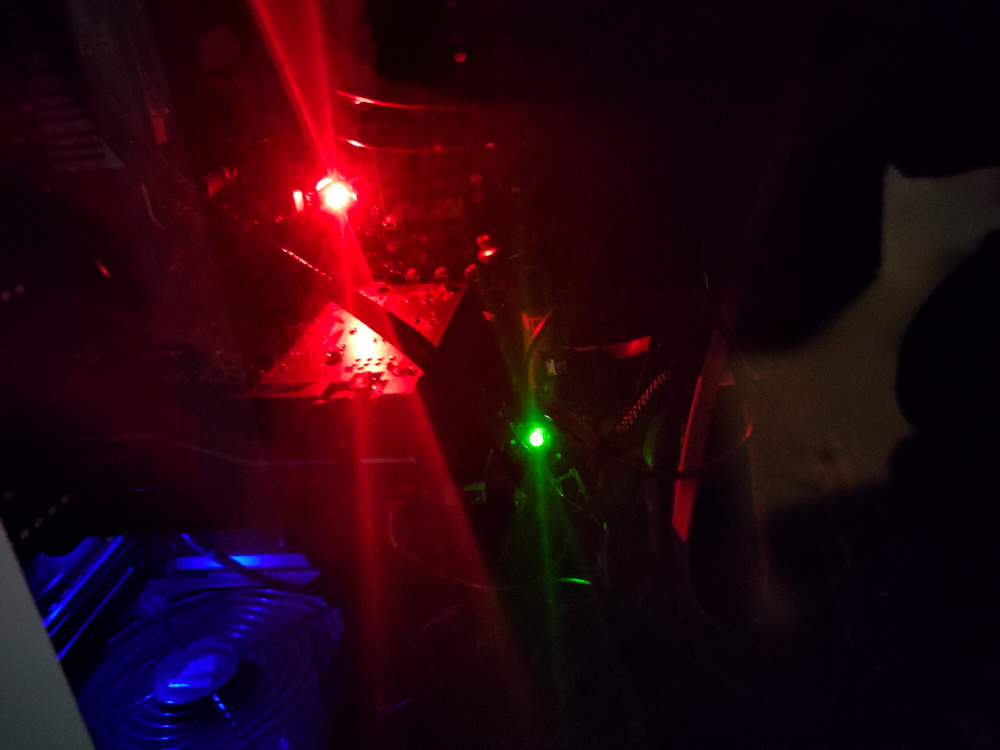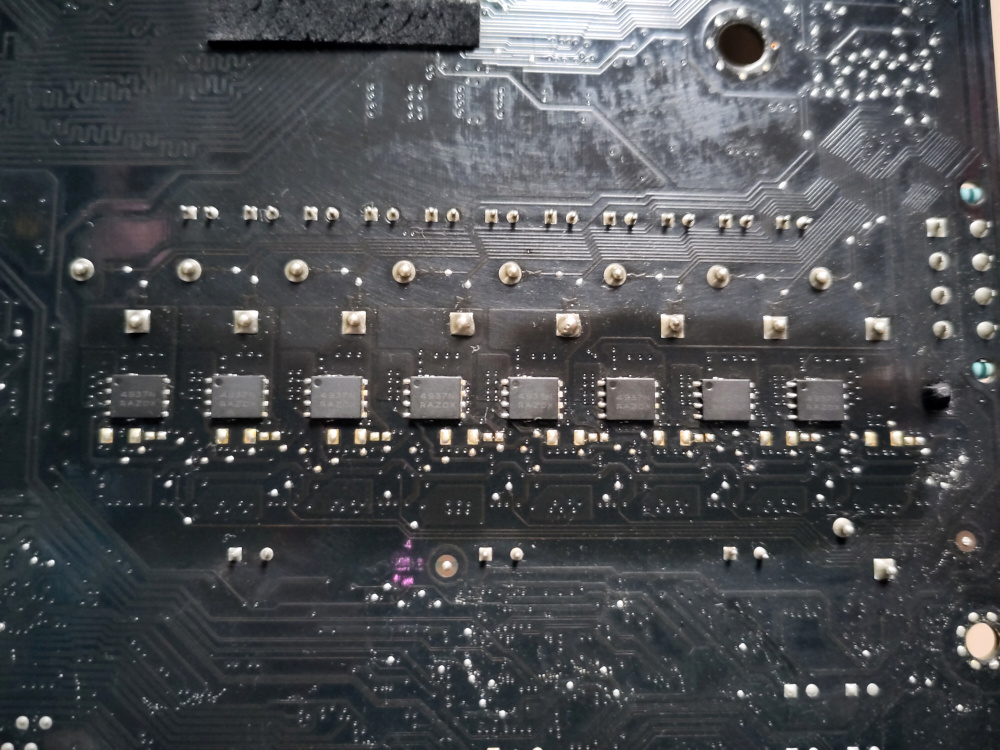After years of loyal service, my battlestation died recently a glorious death with all honors 🫡
I left the computer to do some heavy lifting (multi-core based compression and encryption of multiple large files) and when I returned the screen was black, with no further signs of life. The computer didn’t replied to pings either, it was just dead. A forceful reset was unsuccessful and I noticed that the CPU led was red. Uh oh …

After some attempts to re-fit the CPU, swap and replace memory DIMS, replace the onboard battery and praying to the three gods of desktop computers, there was a sudden realization.
The machine died in service while doing what it always did best. It was a honorable death and the machine shall be remembered for all eternity.
While disassembling the computer, I notice signs of increased heat stress on the mainboard:

The sudden death while under heavy load is also consistent with this type of hardware failure.
But I also guess it was one time for the old fella.
Early overclocking experiments
This mainboard/CPU/RAM combination is now more than 7 years old. It is based on the old AMD FX-8350 (Piledriver architecture) that I bought at the time to learn how to overclock a system. Back then it was an affordable 8-core CPU, which fitted my needs perfectly. I bought it with an expected lifespan of about a year, giving that I was doing heavy overclocking experiments. It lasted for 7 years, but I stopped overclocking after about half of a year.
Many people disliked the Piledriver architecture, because it was power-hungry and compared to Intel CPUs had crappy single-thread performance. For me it was a nice platform, because already back then, most of my workloads were perfectly parallelized. 8 CPU cores at 2/3 of the speed instead was in total a performance win for most of the stuff, I was doing. It was right for my needs, and I was very happy with this architecture for years to come.
For me, this was a good playing ground for overclocking and getting a more realistic expectation of how system should and should not behave. In the first year I was able to squeeze about 10-20% of performance out of the system, but depending on the outside temperature (it was early fall, and very mild I remember) the system stability was questionable on hotter days. I soon realized that those performance gains are not noticeable for me. System stability on the other hand very much is. Unexpected system freezes or weirdness sucks big time. A single system reboot destroys those 10% performance increase easily and leads to a lot of frustration.
Also: How much is a 10% time saving e.g. while compiling a Linux Kernel if you risk that the whole system frags itself and you have to reinstall your Linux system? 5 minutes time saved vs. a whole day of re-installing and re-configuring your system sounds like a risk I don’t want to have.
I concluded that system stability and predictable workloads are more important for me that a rather negligible and (at least to me) not noticeable performance increase. I much rather wait those 5 minutes longer than risking a whole day wasted, because the filesystem is broken due to a CPU lockup. Not worth risking the struggle on a production machine. No thank you.
So, after a year of performance experiments I reset the mainboard/CPU settings to default and left them there ever since. It remains a loyal machine for 6 more years to come.
The battlestation is dead. Long live the battlestation!
I need this computer for some of the work we do. It’s my virtualization lab and mothership for work and personal tasks. Stuff that I can’t or don’t want to do on a Laptop. Peripherals matter. Having a system that can run for hours uninterrupted matters. Hard disk space matters. At least to me.
So, following my old tradition of constantly upgrading parts of my computer, I decided to move to a Ryzen 5 CPU with a suitable mainboard and new RAM.
I can keep the rest of the system, including the power supply, storage devices, the GPU and the rest of the peripherals. For about 500 bucks I can get a decent upgrade to a modern workstation, which is much more power efficient and hopefully will last for another decade.
Goodbye old Piledriver. Many hated you, I loved you and can only say that we had a good time together. You were loyal and worked nicely for all of the things, that we did together. Couldn’t have wished for more.
